Last updated: April 20, 2023
Article
50 Nifty Finds #22: It's a Wrap!
Rangers in leggings? It may not sound very practical or professional, but leggings were part of National Park Service (NPS) uniforms for decades. They weren’t the leggings we think of today—although they share characteristics with leg warmers popular in the 1980s. They have been called by many names throughout history and by different cultures, including leggings, leg wraps, puttees, spiral puttees, wickelbanders, leg bindings, winingas, or gaiters. Designs and materials changed over time, but they served the same basic purposes: providing warmth, support, and protection for the wearer’s legs. In NPS uniform regulations, the leg wraps were called either leggings or puttees.
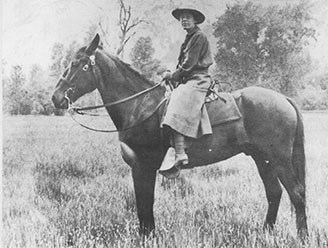
Spiral wrap puttees date back to ancient Greece, although the word “puttee” comes from the Hindi “patti,” meaning bandage or strip of cloth. Spiral puttees were designed to be wound around the leg from the ankle to the knee, fitting closely against the leg and giving even pressure without twists in the fabric. They were invented long before socks to protect the legs and keep them warm. Spiral puttees were cheaper than knee-high boots, kept dirt and objects from getting into shoes or boots, and dried faster than boots if they got wet.
Commonly used as part of military uniforms through World War I, they were also used by the general public by the early 1900s. Manufacturers such as Fox Brothers and Company marketed their spiral puttees as early as 1903 noting, “no leg covering has ever been invented equal to the puttee.” They fit any size leg and didn’t require measurements before buying. By 1914, Fox Brothers advertisements recommended their use in motoring, cycling, winter sports, hunting, riding, walking, and other activities by men, women, and children. Their benefits for rheumatism and varicose veins were touted (they could be wrapped tightly to form a compression stocking), and they were described as “a most comfortable support to the leg.”
Over time, many types of puttees became available. The 1917 Military Equipment catalog by Sears, Roebuck & Company offered several, including US Army-regulation canvas puttees, cowhide leather army puttees, army-style canvas strap puttees, and knit puttees (which could also be worn under leather puttees).
Ranger Wraps
Given the popularity of puttees for military and civilian use in the early 1900s, it’s not surprising that puttees were worn by rangers living and working in western national parks—or that they would feature prominently in early NPS uniforms.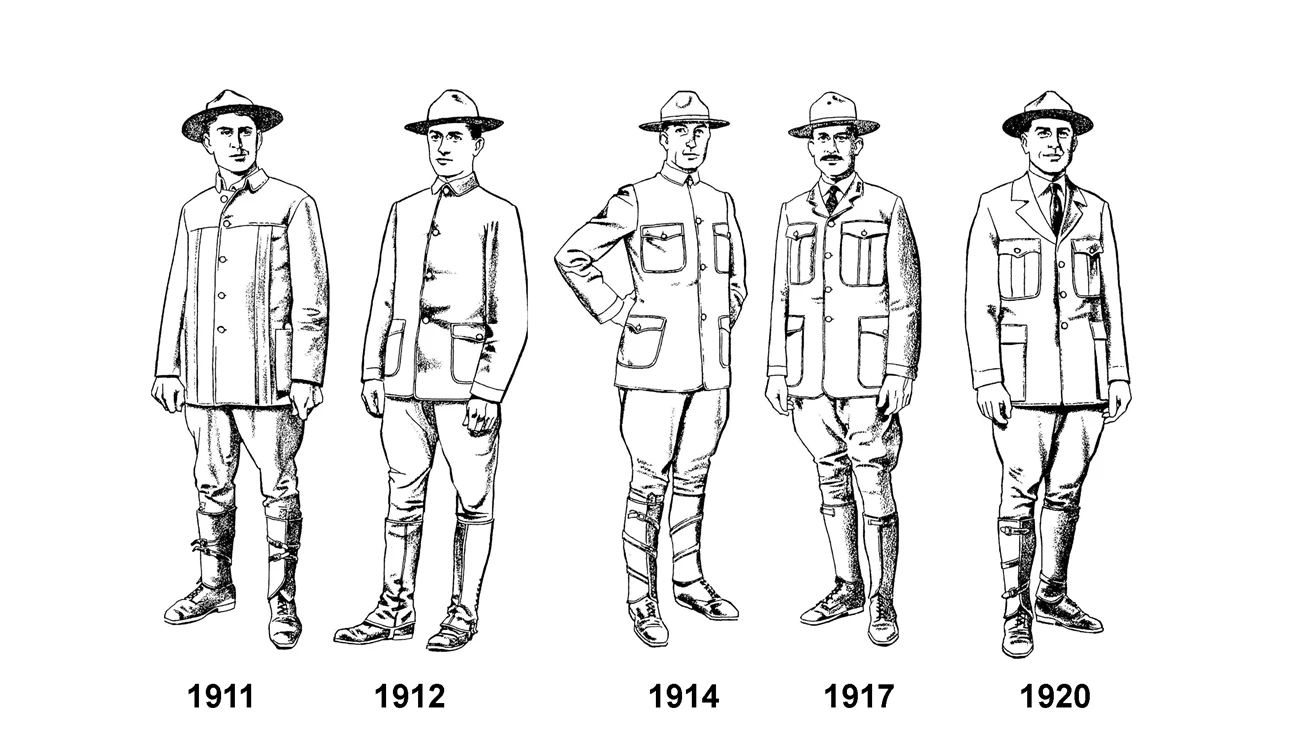
The desire for a ranger uniform came from the field, not the NPS Washington Office. The first documented request for an NPS uniform was in 1907 when "ranger in charge" Walter Fry at Sequoia and General Grant national parks asked the Department of the Interior to approve one. However, Superintendent Albert R. Greene of Platt National Park (now Chickasaw National Recreation Area) had created a uniform for his park rangers several years earlier. It consisted of blue denim or olive-drab wool shirts and khaki canvas breeches and leggings for summer. The M.C. Lilley Company of Columbus, Ohio, provided "made to measure" winter uniforms consisting of an olive-drab wool coat and breeches and leather puttees.
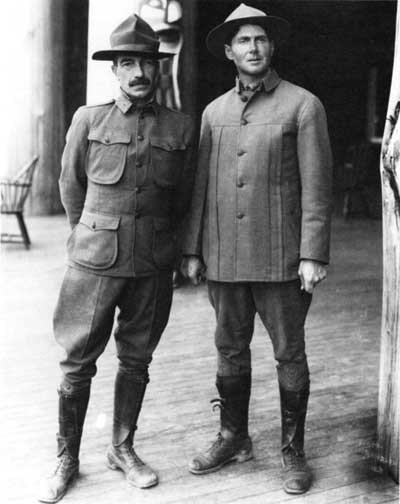
In 1909 Fry had his rangers purchase "ready-made suits" of forestry green worsted wool coats in a military cut with olive drab wool shirts and regulation Stetson hats from the Fechheimer Brothers Company in Cincinnati, Ohio. For patrol duty, rangers also wore pigskin leggings made by the Regal Shoe Company.
Glacier National Park also pushed to have its rangers wear uniforms. In 1911 Major William R. Logan, superintendent, had arranged for Parker, Bridget & Company to supply them through its military uniform department. The Glacier uniform consisted of a Norfolk jacket, wool shirt, pair of riding trousers, pair of leggings, and a felt Stetson-style camping hat. The uniform cost each ranger $15.
Although the leggings are not described in surviving correspondence, a photograph from Glacier National Park documents that they were leather rather than canvas. They were definitely not spiral puttees.
The authorized uniform continued to evolve, and changes were made in 1912, 1914, and 1917. In 1912 “winter service leggings” made from leather were part of the uniform. That same year, summer leggings were requested from Sigmund Eisner. Based on a surviving drawing in the Yellowstone National Park museum collection, the summer leggings were likely made from canvas with side lacings and a heel strap to keep them in place. The cost of the summer uniform increased to $18 while the winter uniform went up to $22.50.
The 1914 and 1917 authorized uniform descriptions specified leather puttees.
When the NPS issued its first official uniform in June 1920, puttees were part of the standard uniform. Spiral puttees or tan riding boots could be worn with the uniform, but “on dress occasions” leather puttees were required. The puttees and matching shoes could be tan, but cordovan (reddish-brown or burgundy) was the preferred color. The uniform regulations were updated in 1923, 1925, 1926, and 1928; puttees were a consistent requirement to accompany the riding breeches.
Although spiral puttees were permitted, they appear to have been unpopular with rangers. Most photographs show them wearing leather puttees. One notable exception was Walter Fry, superintendent at Sequoia, who was photographed wearing them in June 1920.
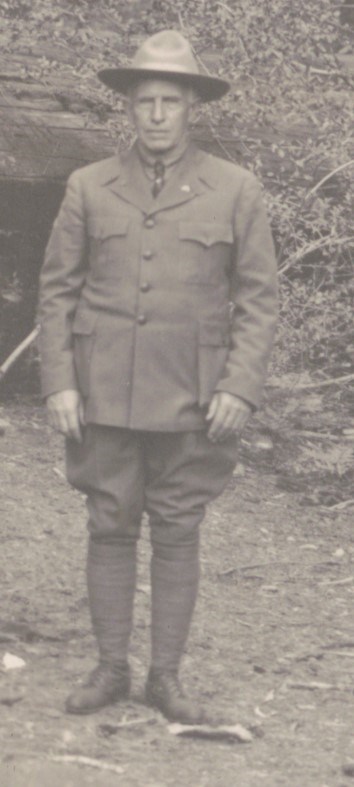
Wrapping It Up
Although trousers were occasionally ordered instead of breeches in the mid-1920s, breeches were still required for rangers and officers. In 1928 the uniform regulations allowed trousers instead of breeches for policemen at Hot Springs National Park and members of the “clerical forces” because they didn’t ride horses. Although leather leggings and matching shoes still accompanied breeches, army field boots became an option. These knee-high boots eliminated the need for puttees for those who chose to wear them and signaled the beginning of the end of puttees as a part of the NPS uniform.
In the 1930s more parks were being created in the East where the weather was hot and humid in the summer. The regulation wool uniform with breeches and puttees was unsuitable for that climate. Correspondence as early as 1931 brought requests for exemptions from the breeches and puttees. Most agreed that long trousers, cotton shirts, and some sort of lightweight headgear would be more appropriate. In February 1932 Director Horace M. Albright authorized a summer uniform that featured trousers instead of breeches and did not require puttees.
New uniform regulations were issued in June 1932. Although leather leggings were still required with breeches, the number of employees who could wear trousers expanded further to include those in the eastern national parks, those at Colonial and George Washington Birthplace national monuments, and superintendents, custodians, rangers, or other field personnel "when in attendance at public, semipublic or private occasions when such attendance is not actually in an official capacity.” However, when giving addresses before the public, breeches were required.
Breeches remained an essential part of the formal NPS uniform in the 1930s and most of the 1940s. However, uniform regulations issued April 13, 1936, eliminated puttees, replacing them with leather field boots. On July 3, 1947, the breeches and boots were eliminated from the uniform regulations. Although employees were allowed to wear them "so long as they are serviceable and presentable," no new ones were to be ordered.
Despite the use of puttees in NPS uniforms for almost 30 years, the NPS History Collection only includes one pair, worn by ranger Robert A. Johnson at Mount Rainier National Park in 1926. As an object, they are more than just a quaint throwback to an earlier time or a footnote in development of the "ranger look.” Puttees served a practical purpose at the time, but their elimination (together with breeches as part of the standard uniform) in favor of trousers and shoes reflects dramatic changes in operations, workforce, and technology as the NPS evolved over its first few decades.
Although rangers still conducted backcountry patrols, the 1920s saw greater emphasis on education and interpretation in the frontcountry. As the NPS built more and better roads, visitors increasingly came by private cars, making it easier for them to get around—and requiring that rangers keep up using motorized patrols. The widespread administrative use of vehicles by the NPS brought efficiencies as well as significantly reducing the number of employees riding horses. The humble puttees also speak to the rapid expansion of the National Park System in the 1930s and 1940s, which brought new parks and monuments in the East and Southwest where differing climates made the early uniform developed for western parks impractical and puttees and even knee-high boots unnecessary. The NPS had changed, and the uniform along with it.
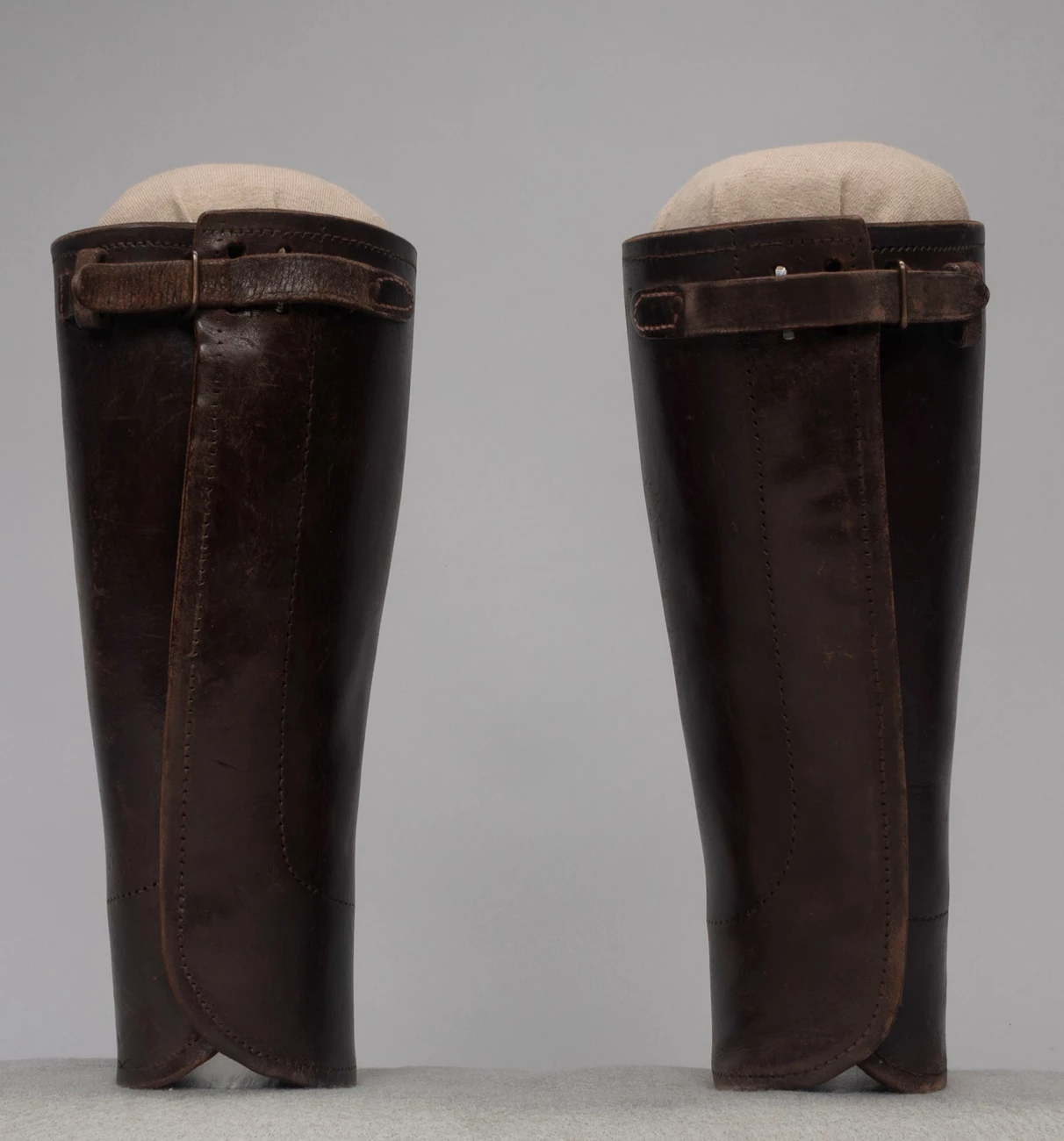
Sources:
-- (1903). Spiral Puttees. Accessed on April 17, 2023, at https://digitalcollections.nypl.org/items/510d47e1-2621-a3d9-e040-e00a18064a99-- (1914). Advert for Fox Puttees. Accessed on April 17, 2023, at https://www.prints-online.com/ad-foxs-puttees-1914-14163668.html
Sears, Roebuck and Company. (1917). Military Catalog. Accessed on April 16, 2023 at https://www.gutenberg.org/files/54213/54213-h/54213-h.htm
Workman, R. Bryce. (1994). In Search of an Identify, 1872-1920. National Park Service Uniforms Number 2. Harpers Ferry Center, Harpers Ferry, WV.
Workman, R. Bryce. (1995). Ironing Out the Wrinkles, 1920-1932. National Park Service Uniforms Number 3. Harpers Ferry Center, Harpers Ferry, WV.
Workman, R. Bryce. (1998). The Developing Years, 1932-1970. National Park Service Uniforms Number 5. Harpers Ferry Center, Harpers Ferry, WV.
